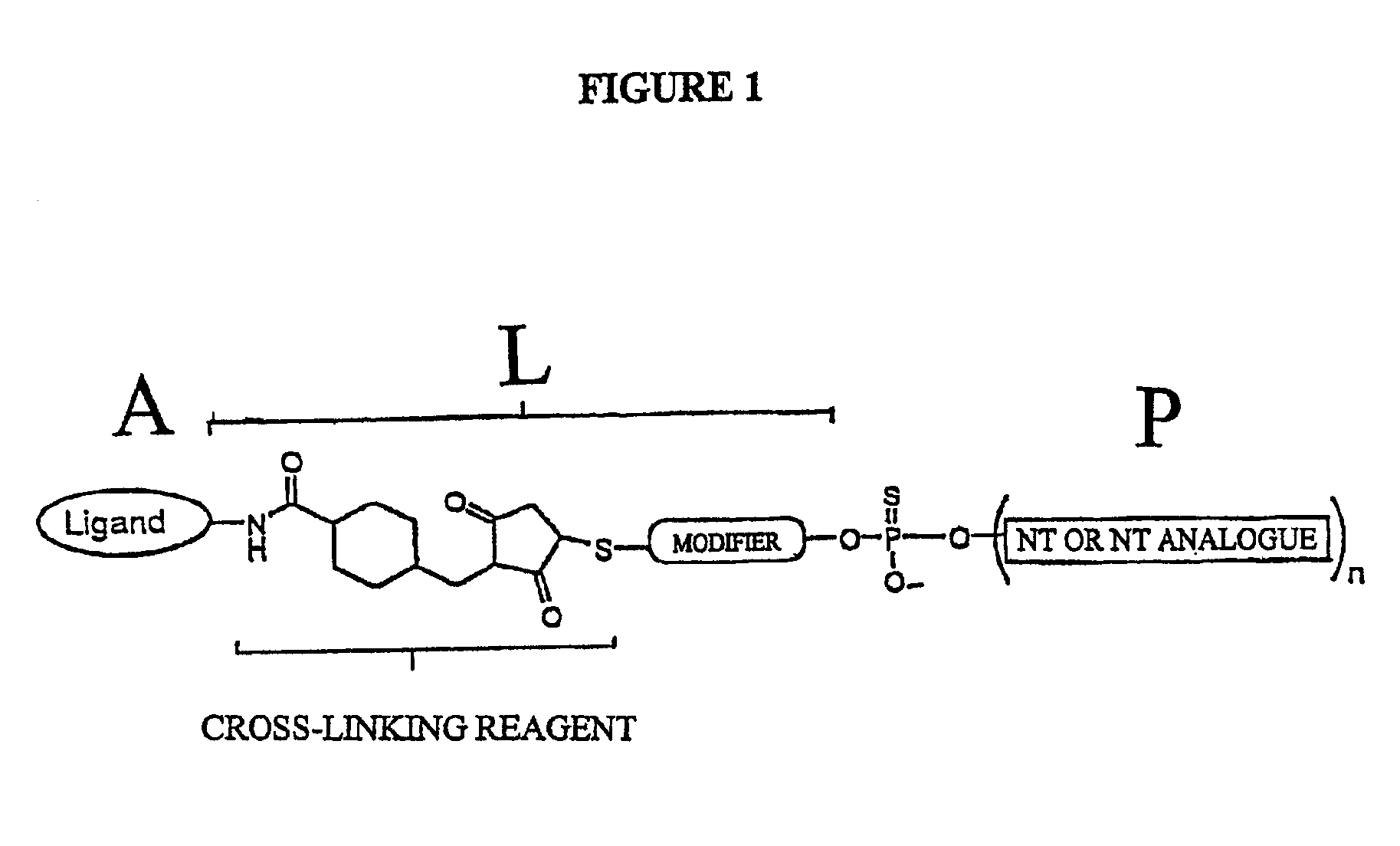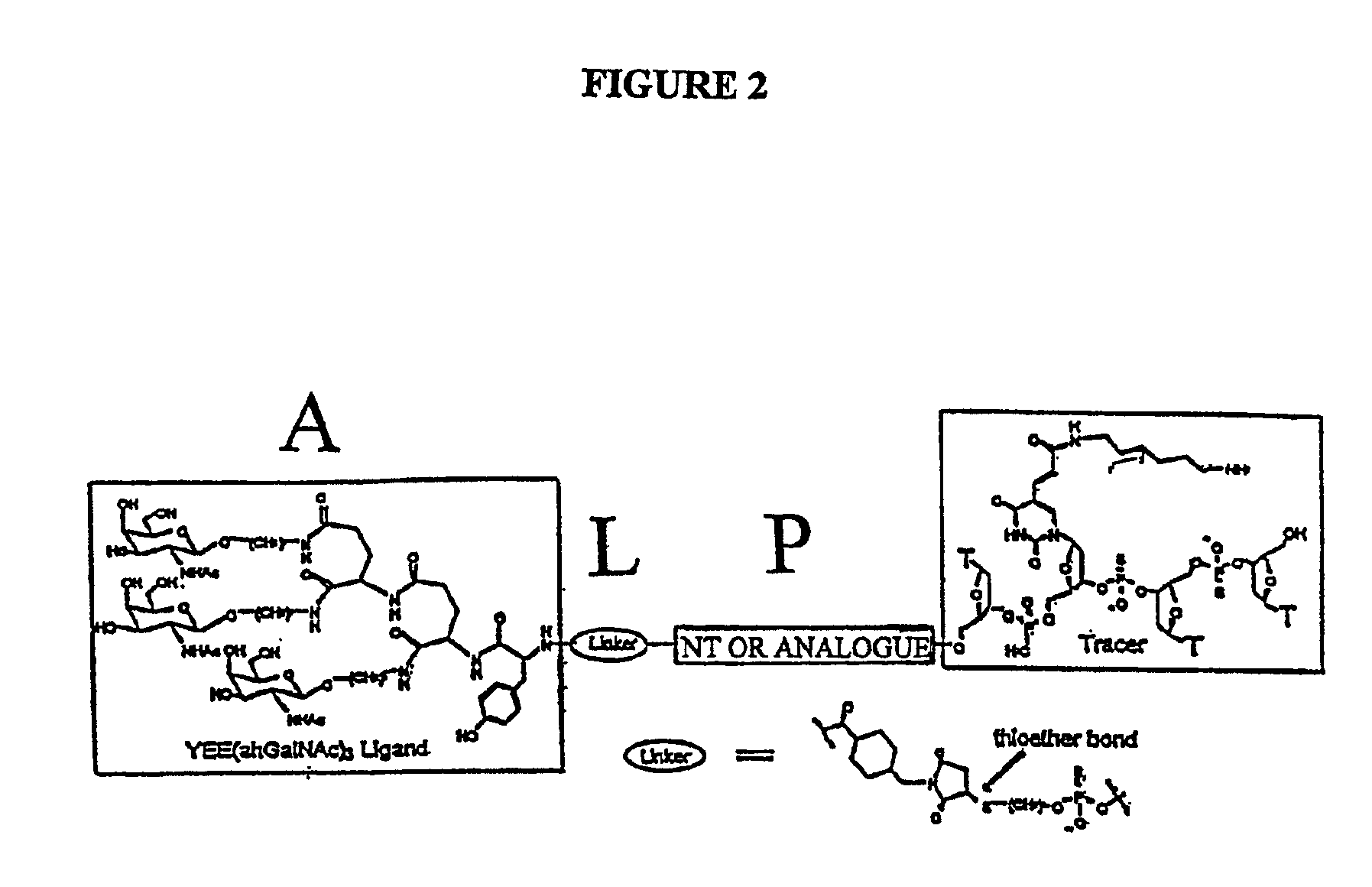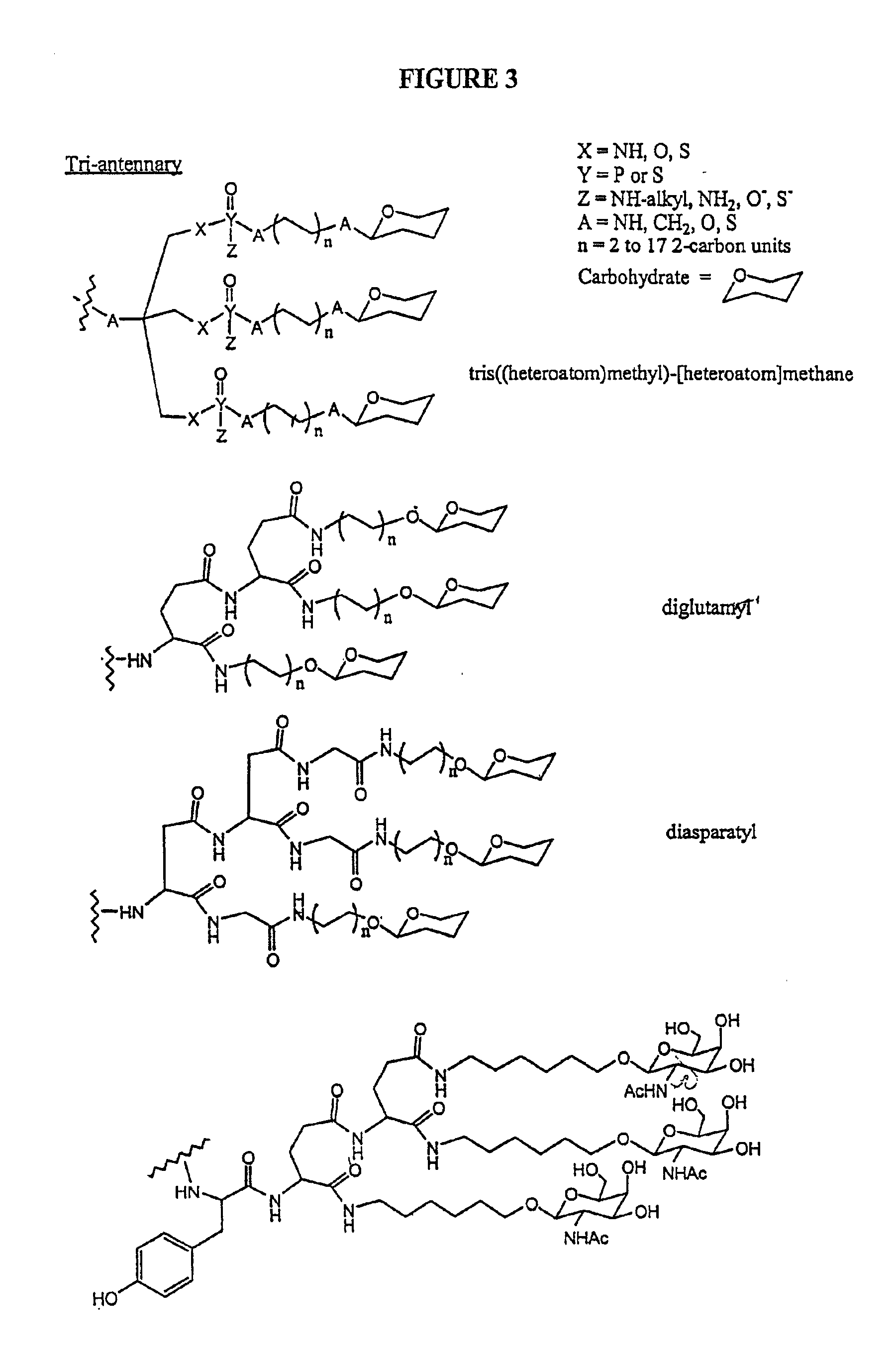Conjugates of glycosylated/galactosylated peptide, bifunctional linker, and nucleotidic monomers/polymers, and related compositions and method of use
- Summary
- Abstract
- Description
- Claims
- Application Information
AI Technical Summary
Benefits of technology
Problems solved by technology
Method used
Image
Examples
example 1
[0077]This example describes the synthesis of the 5′-C6 disulfide 5-fluoro-2′-deoxyuridine mononucleotide (4a and 4b, FIG. 4)
[0078]A 15-μmole column was prepared using 0.3701 g (26 μmole / g loading capacity) of the Universal-Q CPG (1, FIG. 4) and placed on one of the two reaction ports of a Millipore Expedite DNA / RNA synthesizer. Specifically, a CH3CN solution containing the 5-fluoro-2′-deoxyuridine synthon (0.25 g in 5 ml of CH3CN) was placed in the “T” bottle, and the C6 disulfide phosphoramidite synthon (3, FIG. 4) was placed in the “5” bottle (see, e.g., Smith et al., Nucleosides and Nucleotides, 15(10), 1581-1594 (1996)). The automated synthesis was carried out sequentially (from the 3′→5′-end), and entailed the reaction of the 5-fluoro-2′-deoxyuridine phosphoramidite synthon (2, FIG. 4) with the solid support followed by treatment with the thiol modifier synthon (3, FIG. 4). For the phosphodiester-linked compound, the standard oxidizing solution (3% I2 in a solution of tetrahyd...
example 2
[0080]This example illustrates the preparation of thiol-modified mononucleotide (FIG. 5).
[0081]The reduction of the disulfide moiety to the thiol was effected by the treatment of the 5′-disulfide-containing compound with DTT. Thus, 16 O.D.268 (1.0 μmole) disulfide oligomer in 330 μl H2O was treated with 0.25 M sodium phosphate solution, de-gassed (pH 8). To this solution, 50 μl of freshly prepared and degassed 1 M DTT solution in H2O were added. The mixture was incubated at 37° C. for 2 hrs. Quantitative reduction was confirmed by reversed-phase HPLC analysis, which showed that the thiol-modified mononucleotide (elution time: 15.4 min for the phosphodiester-linked derivative (6a, FIG. 5) and 17.4 min for the phosphorothioate-linked derivative (6b, FIG. 5)) compared to 20.4 min for the parent disulfide phosphodiester-linked oligomer and 24 min for the parent disulfide phosphorothioate-linked oligomer) using a linear gradient of CH3CN in 50 mM sodium phosphate (pH 5.8) (2%→50% CH3CN i...
example 3
[0082]This example illustrates the synthesis of SMCC-YEE(ahGalNAc)3.
[0083]About 1-2 μmole of YEE(ahGalNAc)3 (see, e.g., Lee, et al., Glycoconjugate J., 4, 317-328 (1987)) was dried into a 1 ml glass Reacti-vial. To this solution, anhydrous DMSO (250 μl) and anhydrous DIPEA (3 μl) were added. The solution was then treated with 150 μl of a solution containing vacuum-dried SMCC (6 mg) in anhydrous DMSO. The mixture was vortexed briefly and left standing at room temperature for 2 hrs. Analysis by reversed-phase C18 HPLC indicated complete conversion of the starting YEE(ahGalNAc)3 (elution time: 6.6 min) to the desired product SMCC-YEE(ahGalNAc)3 (elution time: 10.1 min). The reaction mixture was then diluted to 10 ml with 50 mM sodium phosphate (pH 5.8) containing 2% CH3CN and was loaded onto a Sep-Pak cartridge. The cartridge was washed with 10 ml of 50 mM sodium phosphate (pH 5.8) containing 2% CH3CN, and the product was eluted with 10 ml of 25% CH3CN / H2O. The product was concentrated...
PUM
| Property | Measurement | Unit |
|---|---|---|
| Fraction | aaaaa | aaaaa |
| Fraction | aaaaa | aaaaa |
| Fraction | aaaaa | aaaaa |
Abstract
Description
Claims
Application Information
 Login to View More
Login to View More - R&D
- Intellectual Property
- Life Sciences
- Materials
- Tech Scout
- Unparalleled Data Quality
- Higher Quality Content
- 60% Fewer Hallucinations
Browse by: Latest US Patents, China's latest patents, Technical Efficacy Thesaurus, Application Domain, Technology Topic, Popular Technical Reports.
© 2025 PatSnap. All rights reserved.Legal|Privacy policy|Modern Slavery Act Transparency Statement|Sitemap|About US| Contact US: help@patsnap.com



